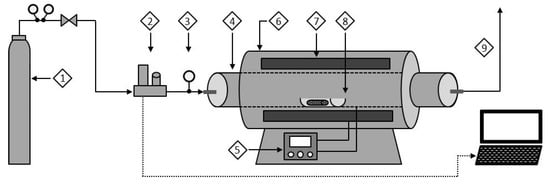Nanoporous Carbon Materials for Advanced Technological Applications
A topical collection in C (ISSN 2311-5629). This collection belongs to the section "Carbon Materials and Carbon Allotropes".
Submission Status: Closed (20 October 2025) | Viewed by 40755Editors
Interests: fullerene nanoarchitectonics; nanoporous carbons; energy storage; sensing
Special Issues, Collections and Topics in MDPI journals
Interests: energy storage; nanoporous carbon materials; sensing; self-healing gels
Topical Collection Information
Dear Colleagues,
We would like to invite you to submit original papers, feature articles, reviews, communications, or letters to this Topical Collection of C, a journal on carbon research, entitled “Nanoporous Carbon Materials for Advanced Technological Applications.” Hierarchically-porous carbon materials comprised of both micro- and mesopore architectures have received considerable attention in recent days in advanced applications. The aim of this Topical Collection is to publish recent developments and interesting novel insights into the production of high surface area and large-porosity nanoporous carbon materials with interconnected pore structures for technological applications including adsorption, catalysis/photocatalysis, energy storage (supercapacitors and batteries), energy conversion, vapor or gas sensing, and others. Emphasis is given to papers describing fabrication, characterizations, structure-property relation, porosity tuning, surface functionalization, hetero-atom doping, and also the binary or ternary composite materials that enhance the overall performance of the materials. In this Topical Collection, we are looking for outstanding high-performance nanoporous carbon materials fabricated from synthetic or natural precursors including agro-wastes or biopolymers either by templating method or by direct carbonization of chemical activation methods. We welcome both experimental and theoretical studies in this Topical Collection.
We look forward to receiving your excellent submissions.
Dr. Lok Kumar Shrestha
Dr. Rekha Goswami Shrestha
Collection Editors
Manuscript Submission Information
Manuscripts should be submitted online at www.mdpi.com by registering and logging in to this website. Once you are registered, click here to go to the submission form. Manuscripts can be submitted until the deadline. All submissions that pass pre-check are peer-reviewed. Accepted papers will be published continuously in the journal (as soon as accepted) and will be listed together on the collection website. Research articles, review articles as well as short communications are invited. For planned papers, a title and short abstract (about 250 words) can be sent to the Editorial Office for assessment.
Submitted manuscripts should not have been published previously, nor be under consideration for publication elsewhere (except conference proceedings papers). All manuscripts are thoroughly refereed through a single-blind peer-review process. A guide for authors and other relevant information for submission of manuscripts is available on the Instructions for Authors page. C is an international peer-reviewed open access quarterly journal published by MDPI.
Please visit the Instructions for Authors page before submitting a manuscript. The Article Processing Charge (APC) for publication in this open access journal is 1600 CHF (Swiss Francs). Submitted papers should be well formatted and use good English. Authors may use MDPI's English editing service prior to publication or during author revisions.
Keywords
- nanoporous carbons
- micro/mesopores
- activated carbon
- functional materials
- energy storage
- supercapacitors
- sensing
- separation
- adsorption
















